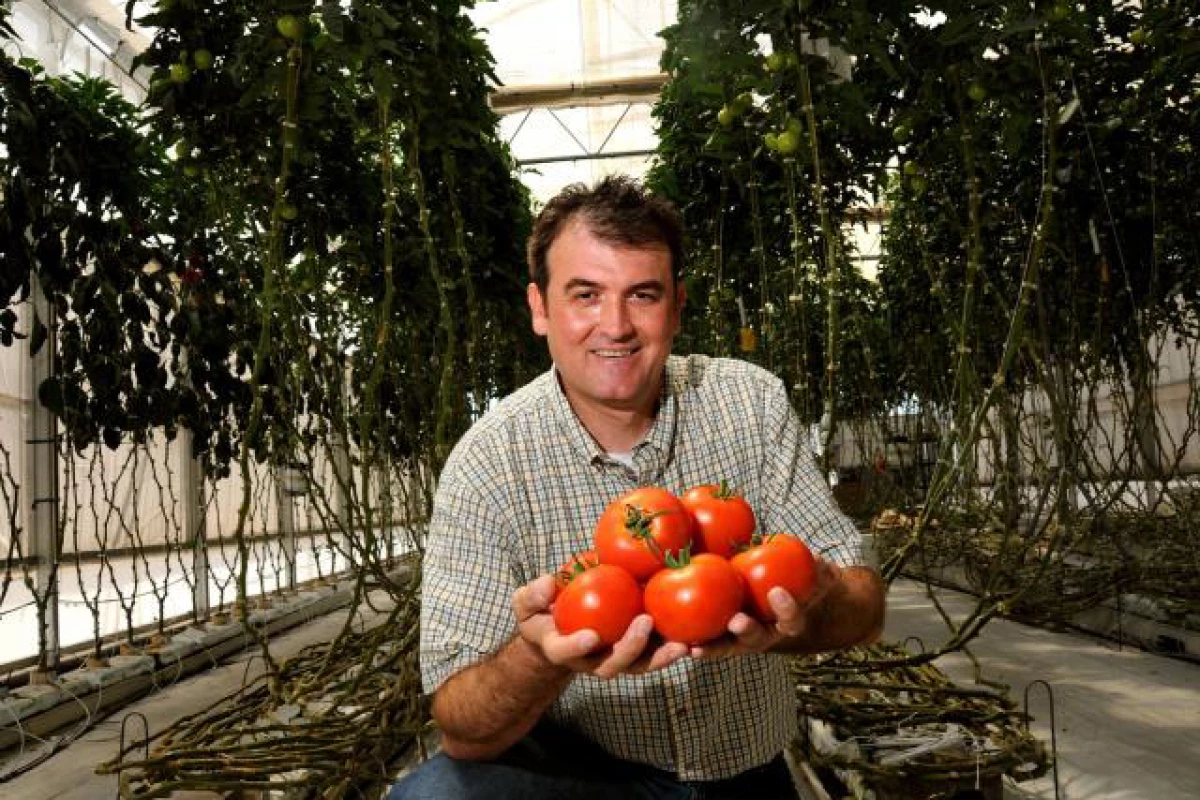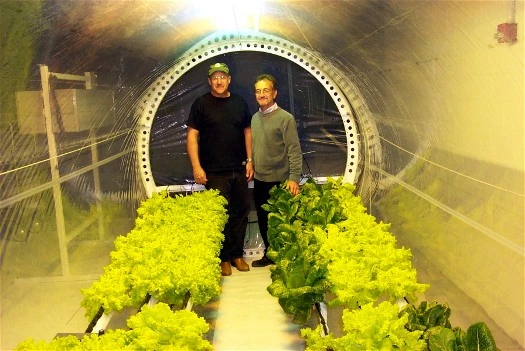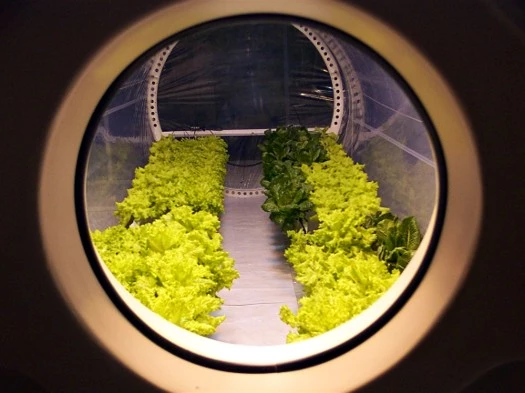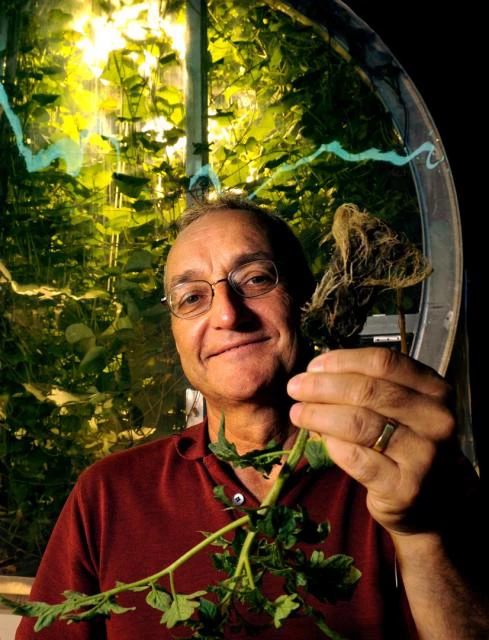While we’re not likely to see crops of any sort sprouting from the moon’s surface any time soon, researchers have built a prototype lunar greenhouse that could allow plants from Earth to be grown without soil on the moon or Mars. The membrane-covered module can be collapsed to a 4-foot (1.2m) wide disk for interplanetary travel and contains water-cooled sodium vapor lamps and long envelopes that would be loaded with seeds, ready to sprout hydroponically.
The prototype lunar greenhouse built by researchers at the University of Arizona Controlled Environment Agriculture Center (CEAC) represents the last 18 feet (5.5m) of one of several tubular structures that would be part of a proposed lunar base. The tubes would be buried beneath the moon’s surface to protect the plants and green thumbed astronauts from solar flares, micrometeorites and cosmic rays.
"We can deploy the module and have the water flowing to the lamps in just ten minutes," said Phil Sadler, president of Sadler Machine Co., which designed and built the lunar greenhouse. "About 30 days later, you have vegetables."
Components for the system, including sensors that gather data, algorithms to analyze that data and a control system to optimize performance, are being designed by assistant professor Roberto Furfaro of systems and industrial engineering, and associate professor Murat Kacira of agricultural and biosystems engineering.
"We want the system to operate itself," Kacira said. "However, we're also trying to devise a remote decision-support system that would allow an operator on Earth to intervene. The system can build its own analysis and predictions, but we want to have access to the data and the control system."
Carbon dioxide is fed into the prototype greenhouse from pressurized tanks, but astronauts would provide CO2 at the lunar base just by breathing. Similarly, water for the plants would be extracted from astronaut urine, and the water-cooled electric lights might be replaced by fiber optic cable – essentially light pipes – which would channel sunlight from the surface to the plants underground.
The lunar greenhouse contains approximately 220 pounds (100kg) of wet plant material that can provide 53 quarts (50 liters) of potable water and about three-quarters of a pound (340g) of oxygen during a 24-hour period, while consuming about 100 kilowatts of electricity and a pound of carbon dioxide.
Lessons from the South Pole
The lunar greenhouse is similar to a CEAC food-production system that has been operating at the South Pole for the past six years. The South Pole Growth Chamber, where many ideas now used in the lunar greenhouse were developed, provides fresh food to the South Pole research station, which is physically cut off from the outside world for six to eight months each year.In addition to food, the researchers say the growth chamber provides a valuable psychological boost for scientists who overwinter at the station.
"There's only 5 percent humidity and all you can normally smell is diesel fuel and body odor," Sadler said. But now researchers can go into the growth chamber and smell vegetables and flowers and see living green things, breaking the monotony of thousands of square miles of ice and snow surrounding their completely man-made environment.
Recycling and efficient use of resources are just as important to the South Pole operation as they will be on the moon, Sadler noted. A dozen 1,000-watt sodium-vapor lights generate a lot of heat, which is siphoned away by each lamp's cooling system and used to heat the station. "Energy is expensive there," Sadler said. "It's about $35 a gallon for diesel fuel."
The CEAC team turned on the prototype lunar greenhouse about eight months ago to see how it would operate and the test run will be completed at the end of this month.
NASA is funding the research under a US$70,000 Ralph Steckler Space Grant Colonization Research and Technology Development Opportunity and CEAC is now applying for Phase II of this grant, which would provide an additional $225,000 for two years.
Next stop – Earth
Aside from the possibility of setting the table for astronauts on the moon or Mars, CEAC Director Gene Giacomelli says the technology could also lead to plant colonization in another traditionally hostile environment – large urban centers. "There's great interest in providing locally grown, fresh food in cities, for growing food right where masses of people are living," Giacomelli said. "It's the idea of growing high-quality fresh food that only has to be transported very short distances. There also would be a sense of agriculture returning to the everyday lives of urban dwellers. I think that idea is as exciting as establishing plant colonies on the moon."








